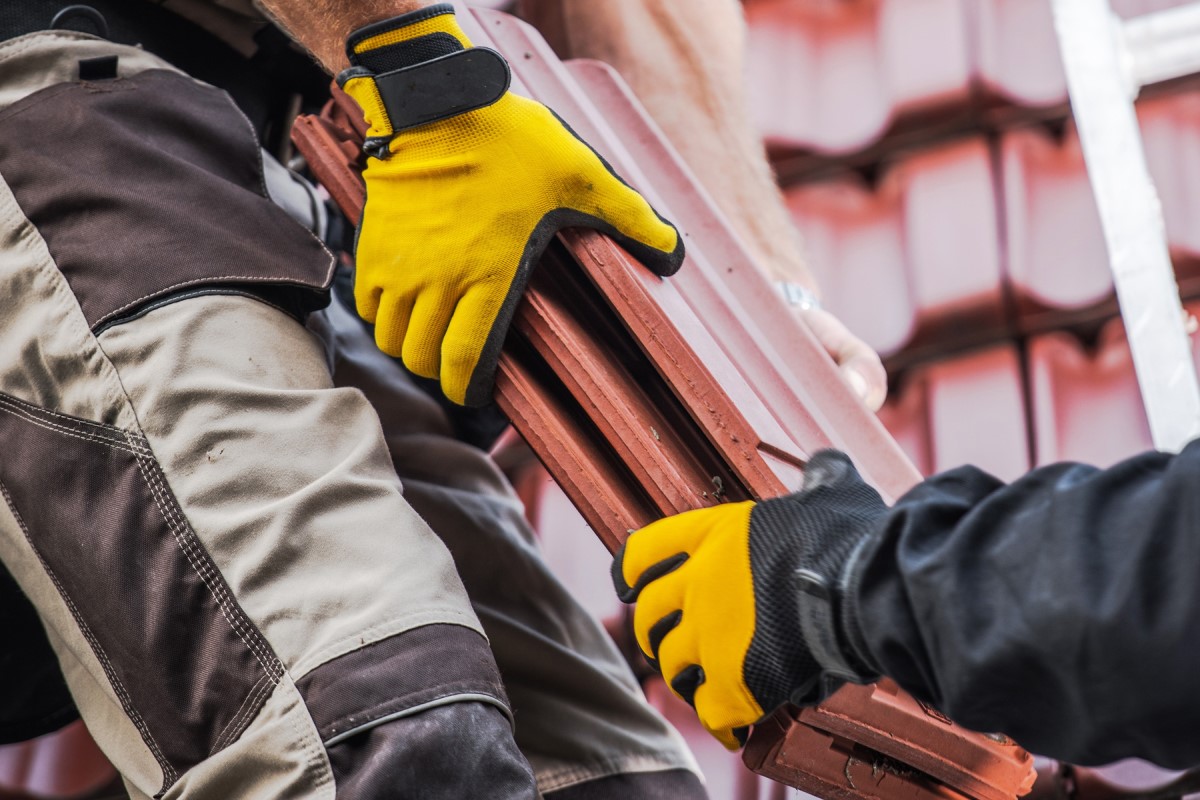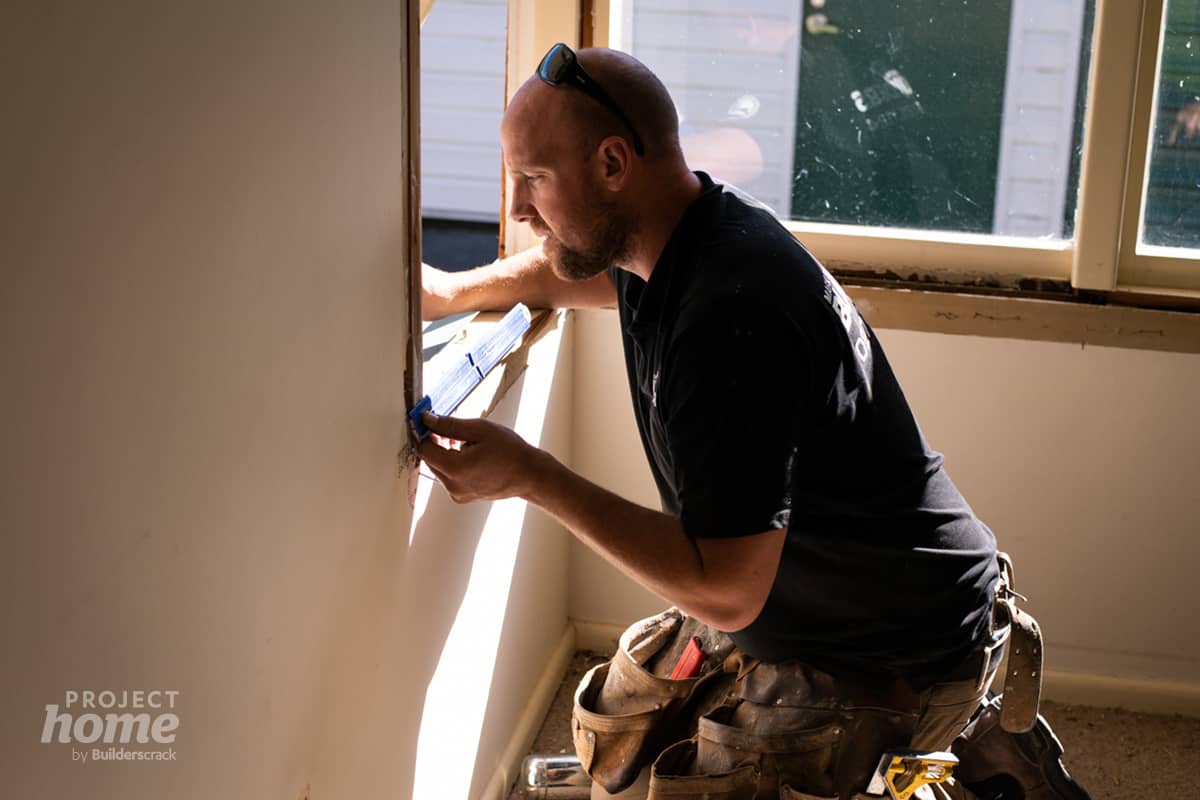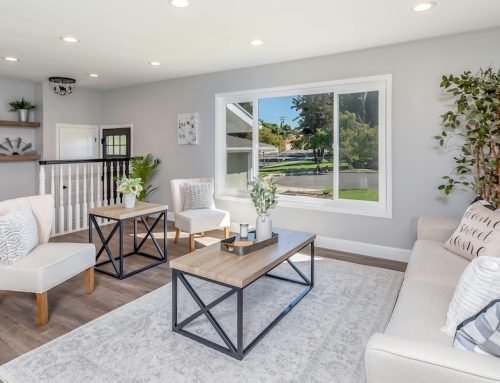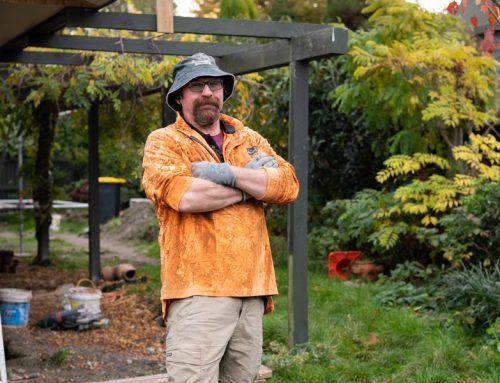It almost seems like the narrative of home improvement and buying a house have merged into one.
Homeowners across NZ are wondering whether they can ‘time the market’ of repairs and renovations by factoring in tradepeople’s availability, accessing materials, and predicting the economy’s next move.
Use this list to evaluate if it’s the right time for you to get work done, and above all, feel confident that you’re making an informed decision.
Let’s get stuck into it!

Lex (left) and Ashraf (right) talk about undertaking work in 2020 in this Project Story | Photo: Alana Shinn
Is it a homeowner or tradesperson’s market right now?
Here’s the short answer: right now, it’s still a tradesperson’s market, but it’s starting to swing back to a homeowners market.
A brief lookback, to now:
- In 2019, the market was fairly balanced between homeowners and tradespeople, edging towards the latter;
- In 2020, post-lockdown, it was undoubtedly a tradesperson’s market with backlogged jobs on top of usual workload;
- In 2021, it continued hard and fast almost exclusively as a tradesperson’s market;
- In 2022, half-way through the year, we’re starting to see it swing towards a homeowners market as tradespeoples’ work diaries start opening up.
What’s causing the swing?
On one hand, we’ve got inflation, shortage of materials, shortage of trades, mortgage increases, difficult lending criteria and a property market slowdown.
On the other hand, we’ve got homeowners with higher home equity than ever before, a backlog of repairs and renovations that have been put off for reasons above, a desire to travel, and the beginning of people wanting to spend less in preparation for an economic downturn.

2022 is the year of alternative materials.
Timing your repair or reno
We’ve outlined the factors at play that are outside and inside of your control, along with some prompts and suggestions to help you time your repair or reno. No sugar coating, just a lay of the land for home improvement right now.
1. What’s your budget?
Money, interest rates and inflation are all hot topics right now. If you’ve got friends or family who built or bought a home in the late 80’s, there’s a good chance you’ve heard their story of living through sky-high interest rates. Here’s the finance factors at play.
Outside your control
- Interest rates: Inflation and higher interest rates will be around for a while.
- Banks: The tightening of LVR restrictions and the big banks’ willingness to lend make it trickier, but not impossible, to access the capital you need to get the renovation moving.
Inside your control
- Budget: Figure out if you can afford the repair or renovation with the funds you comfortably have. Research your project, speak with experienced tradespeople and draft a general budget from there. Always allow 10-15% extra to deal with surprises.
- Cashflow: Will you be able to pay for materials and contractors on time? Prompt payment to your contractors initiates a two-way show of respect and generally garners a better experience for everyone involved.
Upshot: If you can afford the work and most importantly, have the cashflow ability to pay on time, you’re good to get the ball rolling.

Always allow 10-15% extra in your budget to deal with surprises.
2. What’s your timeframe?
Are you and your family planning on staying put for the next 10 years? Or are you looking to sell within the next year? Maybe you’ve got those international guests coming to stay (third time lucky) and need some more room.
Outside your control
- Materials availability: If organised early on, you’ll be able to manage the materials delivery timeframe. However, if the materials are needed mid-way through either due to scope change or unforeseen circumstances that’s when the timeframe will extend beyond initially expected.
- Tradespeople’s availability: The best way to affect your project timeline is to start the conversation with your tradesperson early on — months before you need the project completed.
Inside your control
- Choosing a time that’s good for you: There’s two ways to look at it: one is that all of the external factors could be perfectly aligned, but your internal factors like your time, energy and lifestyle commitments could mean it’s actually not optimal for you. The other way is that external factors might not be optimal, but right now is the best time for you in terms of savings, time and energy to get the work done.
- Upshot: Just like when buying property, try not to give too much weight to that friend’s opinion of when they believe is the best time for repairs or renovation. Go with what you know to be true for you in terms of your factors at play.
3. What trades do you need?
There’s still plenty of demand for tradespeople, however, instead of a three to six month wait, you can now expect a one to three month wait to get a medium-sized job done, for example, like a bathroom renovation.
Outside your control
- Other projects they have on: It’s incredibly normal for a tradesperson to have two to three larger jobs on at the same time, while completing smaller jobs in between. It’s the nature of the business. It’s beneficial to have the conversation around your expectations and theirs for the timeline of your project. Materials (and the type of job) will factor into whether the job can be done in consecutive days.
Inside your control
- Who manages the project: The degree of involvement in your project is set by you. If you love managing all the working parts of a project, you can organise the sub trades and go from there. Or, if you don’t know what trades you need, or you’re looking for a more hands-off approach, search for a builder to project manage on your behalf.
- Due diligence: Check previous reviews, job photos and relevant insurances and licences, especially for consented work. And when it comes to character, finding a tradesperson you gel with is beneficial for larger jobs as they’re going to be a part of your daily life for at least a couple of weeks.
Upshot: Reasonable expectations that are communicated clearly and early on will help your project.

If you’re looking for a more hands-off approach, search for a builder to project manage on your behalf.
4. Will this improve quality of life?
The ultimate question to help make your home improvement decision: “Will this improve the quality of my life?” If the project is going to increase the amount of quality time spent with loved ones then it’s a factor worth considering. And if it means you can wake up every morning feeling proud about your home, then that’s also a factor.
Outside your control
- Emergency repairs: There’s a big difference between emergency or structural repairs, and voluntary improvement. If your day-to-day living is significantly impacted by an issue with your heating, water, or sanitation, it’s out of the question of whether you should wait for a better time.
Inside your control
- Scope of project: It’s easy (and let’s admit, exciting) to go from ‘let’s do the splashback in the kitchen’ to ‘let’s do the splashback, and remodel the cabinets, and…” The hard part will be deciding what’s necessary, and what can wait if budget doesn’t allow (more on that in the next section).
Upshot: Assess the actual cost (of the project), and the opportunity cost (quality of life) and figure out what’s most important to you right now.

If it’s going to increase the amount of quality time spent with loved ones, it’s a factor worth considering.
Pros and cons of timing the home improvement market
It’s tempting to think about the property market returning to pre-pandemic prices. The same can be said about the home improvement market. And there’s plenty of talk about waiting for material prices to revert, but no one really knows if or when that will happen.
So, do you get the ball rolling now? Or do you wait until later? Check out the pros and cons below.
Now:
Later:
To wrap up: 4 things to consider
As for where that leaves you and your project, here’s four core things to consider.





